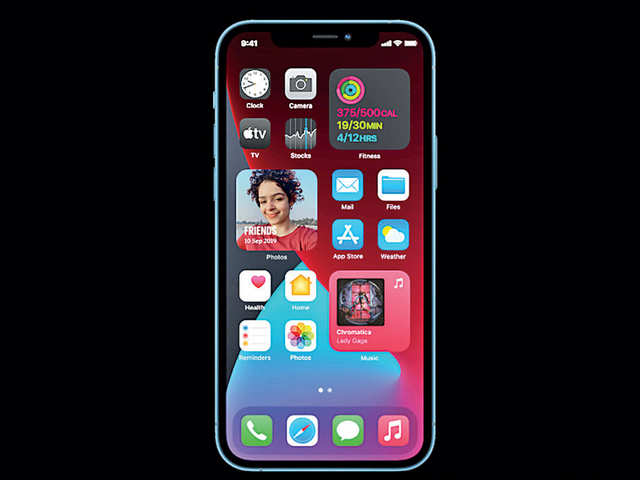Apple spent more money to make the iPhone 12 compared to iPhone 11: Report

Apple reportedly spent more money in creating the iPhone 12 when compared to the iPhone 11. As per a report by Counterpoint Research, making a iPhone 12 (128GB) millimeter-wave model costs Apple up to $431, which is 26% higher compared to the
iPhone 11.
“Despite over $27 cost savings due to the simplified RF design, the BoM cost of the sub-6GHz-only model for overseas markets still increased by 18%,” as per the report by Counterpoint Research.
Explaining the increased component prices, the report said, in the iPhone 12, Apple’s self-designed components including the A14 bionic, PMIC, Audio and UWB chip make up over 16.7% of the overall BoM cost. The shift from LCD to OLED in the iPhone 12 is a big jump, resulting in an over $23 cost increase. Cost increases are also driven by 5G-related components, with components like 5G modem, transceiver and RF front-end system collectively contributing a $34 increase.
Apple iPhone 12 BoM Cost Increase Over iPhone 11 (Image by: Counterpoint Research)
Besides the SDX55M 5G baseband, Apple also relied on Qualcomm for transceivers and RF discrete components for both sub-6GHz and mmWave versions. “For the iPhone 12, Qualcomm will be the second-largest electronic component supplier behind Samsung Electronics,” it added.
The Apple iPhone 12 is claimed to be equipped with more RF components for 5G support. spectrum. “Besides Qualcomm, other major content gainers are Skyworks, MURATA and Avago,” it said.
Counterpoint further mentioned that Apple has managed to diversify its supply sources. “For the iPhone 12, the memory orders are split between industry leaders, with Samsung and KIOXIA (Toshiba) supplying NAND flash, and SK Hynix and Micron supplying LPDDR4X.”
As far as the camera is concerned, the components are largely provided by Sony, LG Innotek and Sharp. “NXP and Broadcom continue providing solutions for wireless connection and display/touch control. Cirrus Logic, Goertek, Knowles and AAC dominate the audio design. TI and ST are major suppliers of power and battery management IC,” it revealed.
Apple is said to have extended its partnership with ASE/USI for SiP (System in Package) packaging technology to reduce the design.
“Despite over $27 cost savings due to the simplified RF design, the BoM cost of the sub-6GHz-only model for overseas markets still increased by 18%,” as per the report by Counterpoint Research.
Explaining the increased component prices, the report said, in the iPhone 12, Apple’s self-designed components including the A14 bionic, PMIC, Audio and UWB chip make up over 16.7% of the overall BoM cost. The shift from LCD to OLED in the iPhone 12 is a big jump, resulting in an over $23 cost increase. Cost increases are also driven by 5G-related components, with components like 5G modem, transceiver and RF front-end system collectively contributing a $34 increase.
Apple iPhone 12 BoM Cost Increase Over iPhone 11 (Image by: Counterpoint Research)
Besides the SDX55M 5G baseband, Apple also relied on Qualcomm for transceivers and RF discrete components for both sub-6GHz and mmWave versions. “For the iPhone 12, Qualcomm will be the second-largest electronic component supplier behind Samsung Electronics,” it added.
The Apple iPhone 12 is claimed to be equipped with more RF components for 5G support. spectrum. “Besides Qualcomm, other major content gainers are Skyworks, MURATA and Avago,” it said.
Counterpoint further mentioned that Apple has managed to diversify its supply sources. “For the iPhone 12, the memory orders are split between industry leaders, with Samsung and KIOXIA (Toshiba) supplying NAND flash, and SK Hynix and Micron supplying LPDDR4X.”
As far as the camera is concerned, the components are largely provided by Sony, LG Innotek and Sharp. “NXP and Broadcom continue providing solutions for wireless connection and display/touch control. Cirrus Logic, Goertek, Knowles and AAC dominate the audio design. TI and ST are major suppliers of power and battery management IC,” it revealed.
Apple is said to have extended its partnership with ASE/USI for SiP (System in Package) packaging technology to reduce the design.


















All Comments (0)+^ Back to Top
Refrain from posting comments that are obscene, defamatory or inflammatory, and do not indulge in personal attacks, name calling or inciting hatred against any community. Help us delete comments that do not follow these guidelines by marking them offensive. Let's work together to keep the conversation civil.
HIDE